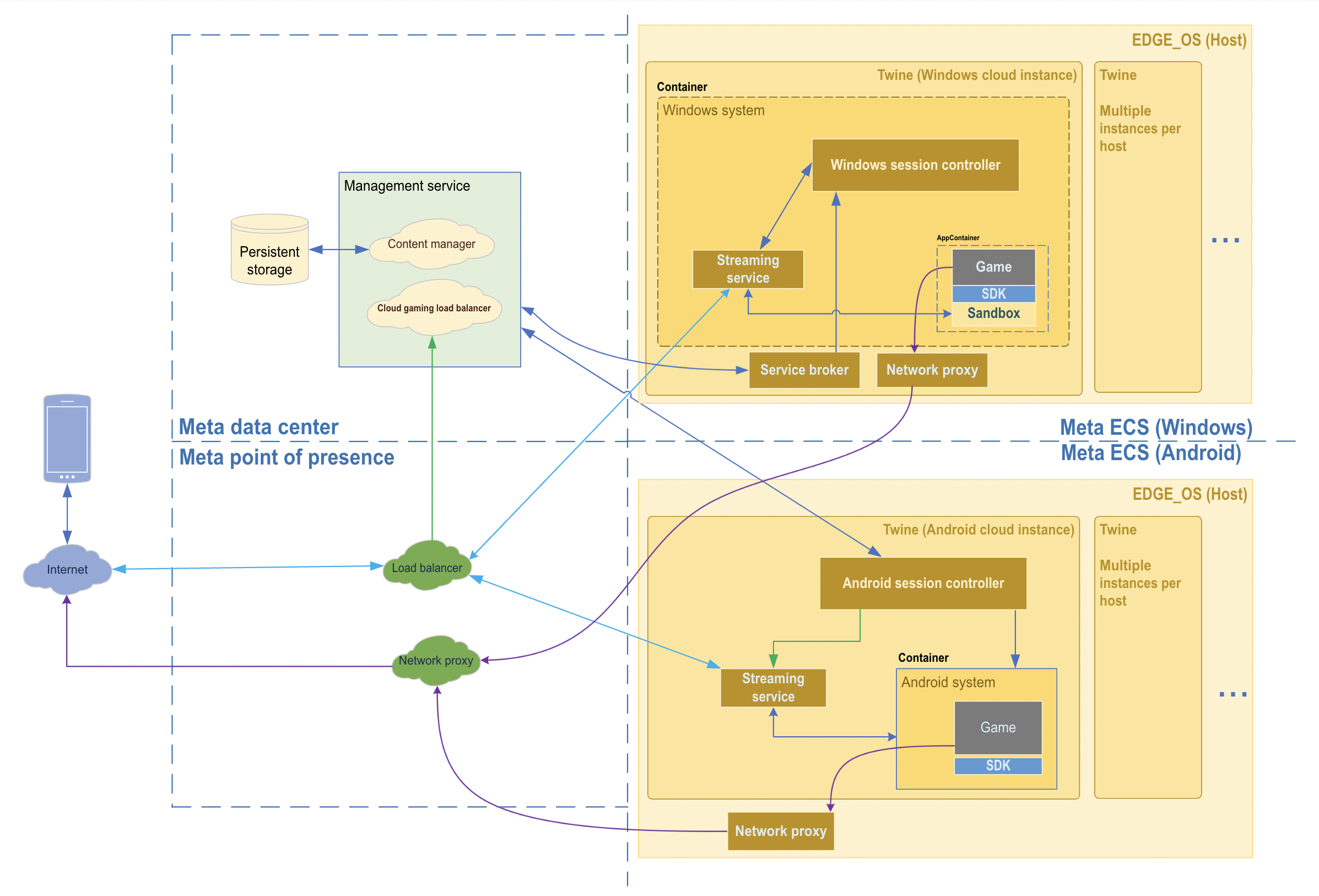In today’s digital world, website speed is crucial. Fast-loading sites keep visitors happy and engaged.
Edge computing hosting can be a great solution for optimizing website speed. Edge computing brings data and processing closer to users. This reduces latency and speeds up website performance. Traditional hosting relies on centralized servers, which can cause delays. Edge computing, on the other hand, uses distributed nodes near users.
This minimizes the distance data travels, resulting in faster load times. In this blog post, we will explore how edge computing hosting enhances website speed. We will discuss its benefits, how it works, and why it matters. By the end, you will understand how to leverage edge computing for a faster website. Stay tuned to learn how to improve your site’s performance and user experience.

Credit: www.facebook.com
Edge Computing Basics
Edge computing hosting speeds up websites by processing data closer to users. This reduces latency and improves load times. Websites benefit from faster responses, enhancing user experience and potentially boosting engagement.
Edge computing is rapidly reshaping the digital landscape, especially in the realm of website speed optimization. If you've ever been frustrated with slow-loading websites, you're not alone. Speed is crucial for user satisfaction and SEO rankings. Edge computing can be a game changer in this domain. But what is edge computing, and how does it differ from the traditional cloud setup you might already be familiar with?
What Is Edge Computing?
Edge computing brings data processing closer to the data source, rather than relying solely on centralized data centers. Imagine you're playing an online game. With edge computing, the game data is processed closer to you, reducing latency and lag time. This approach enhances speed and efficiency, making your browsing experience smoother and more enjoyable. In practical terms, edge computing means that data doesn't have to travel as far. This can significantly speed up website load times, especially for users located far from your central servers. It's like having a mini data center in your neighborhood, ensuring quicker access to the information you need.
How Edge Differs From Traditional Cloud
Traditional cloud computing centralizes data processing in large, remote data centers. This can work well, but it often means longer data travel times, especially if you're far from these centers. Edge computing, on the other hand, distributes this processing closer to users, which can drastically reduce latency. Think of traditional cloud as a massive warehouse storing everything you need. Edge computing acts like a network of local shops, each storing essentials closer to where you live. This proximity means faster access and less waiting. Have you considered how edge computing could enhance your website's speed? By reducing the distance data travels, you can optimize your site for faster load times. This can improve user experience and potentially boost your search engine rankings. Isn't it time to leverage this cutting-edge technology for your benefit?
Credit: bunny.net
Importance Of Website Speed
Website speed is crucial. It shapes the first impression of your site. Visitors have little patience for slow-loading pages. A fast website boosts user satisfaction. It also impacts search engine rankings. Edge computing hosting can help. This technology reduces latency and enhances speed. Understanding the importance of website speed can transform your online presence.
User Experience And Engagement
Fast websites offer better experiences. Users enjoy browsing without delays. They stay longer, explore more, and return often. Slow sites frustrate visitors. This leads to high bounce rates. Quick load times improve engagement. They make users happier and more likely to interact.
Seo Benefits
Search engines favor fast websites. Speed influences search rankings. A quicker site can rank higher on Google. This increases visibility. More visitors mean more potential customers. Speed is a key factor in SEO strategies. It enhances your online reach and authority.
Role Of Edge Computing In Speed Optimization
Edge computing transforms website speed by processing data closer to users. It reduces the distance data travels, enhancing speed and efficiency. Traditional hosting methods often result in delays. Edge computing addresses this by minimizing latency and improving load times. This modern approach enhances user experience significantly.
Reducing Latency
Latency affects how quickly a website responds to user actions. Edge computing places servers near users. This proximity cuts down the time data travels. Shorter distances mean faster data delivery. It ensures swift interaction and fewer delays.
Improving Load Times
Fast load times keep visitors engaged. Edge computing distributes content closer to users. This reduces the time it takes to load a page. Faster websites provide better user experiences. They also lead to higher engagement and satisfaction.
Edge Hosting Solutions
Edge hosting solutions enhance website speed by reducing latency. They bring content closer to users. This results in faster load times and improved performance. Websites benefit from edge computing by leveraging distributed networks. It optimizes data delivery and reduces server strain.
Popular Providers
Many companies offer edge hosting solutions. Amazon Web Services (AWS) is a leading provider. It offers CloudFront, a powerful content delivery network. Google Cloud Platform also provides edge hosting services through its Cloud CDN. Fastly is another popular choice, known for its real-time edge cloud platform. Akamai offers a robust edge delivery solution. Each provider offers unique features and pricing options.
Choosing The Right Service
Selecting the best edge hosting service depends on specific needs. Consider the geographic location of your audience. Evaluate the provider's server locations. Assess their speed and reliability. Look into scalability options for future growth. Compare pricing structures for cost-effectiveness. Ensure the service integrates smoothly with your current infrastructure. This way, you can achieve optimal website speed and performance.
Integrating Edge Computing With Existing Infrastructure
Integrating edge computing with current setups enhances website speed. It processes data closer to users, reducing latency. This approach boosts performance and ensures faster load times, improving user experience.
Integrating Edge Computing with your existing infrastructure can be a game-changer for optimizing website speed. Imagine having the power to reduce latency and enhance user experience without overhauling your entire system. Many businesses hesitate due to perceived complexities, but the path to integration can be straightforward with the right steps and considerations. Let's dive into how you can seamlessly blend edge computing with what you already have.
Compatibility Considerations
Before diving headfirst into edge computing, you need to consider how it will fit with your current infrastructure. Assess your existing hardware and software. Are they capable of supporting edge nodes? Make sure to check the compatibility of your current systems with edge computing platforms. Some legacy systems might require upgrades or adjustments. This step ensures that you avoid potential technical hiccups down the line.
Steps For Seamless Integration
Start by outlining a clear plan. Identify which parts of your infrastructure will benefit most from edge computing. This targeted approach can save resources and maximize impact. Next, conduct a trial run. Implement edge computing on a smaller scale to test its compatibility and performance. This allows you to troubleshoot issues before a full-scale rollout. Lastly, train your team. Equip them with the knowledge and skills needed to manage the new setup. This ensures a smooth transition and continuous optimization of your website speed. Are you ready to take the leap and enhance your website's speed with edge computing? The benefits are tangible, and with these steps, the integration can be smoother than you might expect.
Security Aspects Of Edge Computing
Edge computing offers a new layer of security for websites. By processing data closer to the user, it limits exposure to threats. This decentralization helps in protecting sensitive information. It also reduces the risk of large-scale attacks. Let's delve into the key security aspects of edge computing.
Data Protection
Edge computing enhances data protection by reducing data travel. It processes data locally, minimizing exposure to potential breaches. This approach limits data interception risks during transmission. Local processing ensures sensitive information stays close to the source. It also provides an extra layer of encryption.
Mitigating Cyber Risks
Edge computing mitigates cyber risks by distributing workloads. This distribution makes it harder for attackers to target a single point. With decentralized nodes, a breach impacts fewer data points. It also allows faster detection of anomalies. Quick response times further enhance security measures.
Cost Implications
Edge computing hosting can enhance website speed but may increase costs. It reduces latency by processing data closer to users. While initial setup and maintenance can be expensive, the benefits in user experience and engagement often justify the investment.
Edge computing is transforming how websites handle data, offering speed and efficiency like never before. But as with any technology, there are cost implications to consider. Understanding these financial aspects can help you make informed decisions about whether edge computing is the right choice for your website. ###
Budgeting For Edge Services
To get started with edge computing, you need to plan your budget. Costs can vary depending on the provider and the scale of services you require. Smaller websites might find basic packages sufficient, while larger sites may need more extensive resources. Consider what you can afford without stretching too thin. If you're running a small business, you might not need all the bells and whistles. Look for flexible plans that can grow with your website's needs. ###
Cost Vs. Benefit Analysis
Is the investment in edge computing worth it for your website? Calculate the potential gains in speed and customer satisfaction against the expenses. A faster site can lead to increased traffic and higher conversion rates, which might offset the initial costs. Think about your current hosting solution. Are there speed issues that are costing you customers? A small investment in edge computing could lead to significant revenue increases. The decision isn't just about numbers—it's about long-term strategy. Are you prepared to invest in a technology that could set you apart from competitors? Your website’s speed and reliability can be a game-changer. Ultimately, the choice depends on your specific needs and goals. Have you considered how much a slow website might cost you in lost opportunities?
Future Trends In Edge Computing For Websites
Edge computing is rapidly reshaping the landscape of website speed optimization, bringing data processing closer to users than ever before. As we look towards the future, it's crucial to understand how emerging technologies and predicted developments will influence edge computing and, ultimately, your website's performance. Imagine accessing your favorite website, and it loads instantly, no matter where you are. That's the promise of edge computing's future.
Emerging Technologies
New technologies are constantly emerging that enhance edge computing capabilities for websites. Quantum computing, for instance, holds the potential to process complex algorithms at lightning speed, which could drastically reduce server response times. Another game-changer is 5G technology, offering unprecedented connectivity speeds that can make edge computing even more powerful.
Artificial intelligence is also playing a pivotal role in edge computing. AI algorithms can intelligently manage data flow and predict user behavior, ensuring content is delivered faster and more efficiently. These technologies are not only improving speed but also paving the way for innovative user experiences.
Predicted Developments
As edge computing evolves, expect several exciting developments that will directly impact your website's speed. One anticipated trend is the integration of edge computing with the Internet of Things (IoT). Imagine IoT devices communicating seamlessly with your site, providing real-time data that can enhance user experience.
Another prediction is the rise of decentralized networks. By distributing data processing across multiple nodes, these networks can significantly boost speed and reliability. This shift could make websites more resilient to traffic spikes and reduce latency dramatically.
Consider the implications of these advancements. How will your website adapt to these changes? Will you leverage these technologies to stay ahead of the competition? The future of edge computing offers a wealth of opportunities, and understanding these trends is key to optimizing your site's speed.

Credit: engineering.fb.com
Frequently Asked Questions
What Is Edge Computing Hosting?
Edge computing hosting processes data closer to the user, reducing latency. It improves website speed by minimizing the distance data has to travel.
How Does Edge Computing Improve Website Speed?
Edge computing improves website speed by processing data near the user. This reduces latency and loading times, enhancing user experience.
Is Edge Computing Hosting Secure?
Yes, edge computing hosting is secure. It provides robust security measures, including encryption and local data processing, reducing risks.
Can Edge Computing Benefit Small Websites?
Yes, edge computing benefits small websites by improving load times. Faster websites lead to better user engagement and SEO rankings.
Conclusion
Edge computing hosting improves website speed significantly. Faster sites enhance user experience. This leads to better engagement and increased conversions. Adopting this technology can give your website a competitive edge. Stay ahead in the digital world. Consider edge computing for your hosting needs.
Your visitors will appreciate the faster load times. Make the switch today for a smoother, quicker browsing experience.

